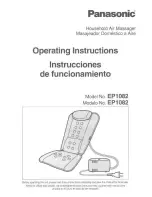
high style plus utility in a
contemporary zigzag
y d a v i d d u n d a s
70
proect numer
It was a revolutionary design in the 1930s, but not everyone can
afford to sit on a piece of art. We work the best features of the original
Zigzag chair into a stylish and completely accessible chair
you can actually pull up to the dinner table.
T
he original Zigzag chair designed by Dutch architect Gerrit Rietveld in the 1930s is an iconic
piece of artwork. The cantilevered, Z-shaped chair looked deceptively simple but employed
masterful joinery and was hailed as a sublime example of minimalist design. It was not a chair you
would want to use for, say, everyday dining.
Nevertheless, with modern adhesives and joinery techniques, it is feasible to build a com-
fortable upholstered dining chair both reminiscent of Rietveld’s Zigzag and strong enough for
everyday use. Our chair’s cantilevered frame also gives it a slight comfortable
springiness.
To withstand structural stresses, the chair’s
side assemblies must be made from a strong
hardwood such as jarrah, maple or white
oak. The seat cross-rails and the slip-seat
frame can be made from a secondary
hardwood. The chair’s miter joints are
reinforced and locked with floating
tenons, epoxied, and pinned with brass
screws. We designed this chair to be built
using the Festool Domino tenon joiner.
Getting started
The visible parts of the chair can be made from an
8' board of 6"-wide 6/4 hardwood. Plane the board to a
thickness of 1
3
/
8
" and rip it into three lengths 1¾" wide. For
ease of handling, cut the three lengths in half to yield six 4'
lengths. Plane and joint each 4' piece so as to finish 1
3
/
8
"x
1
9
/
16
" ensuring that all the faces are square to one another.
Crosscut the parts for the feet, legs, seat side rails, back stiles, and back rails
from the 4’ lengths according to the cut list. It is easier to achieve a consistent
length for the matching parts if you clamp a stop to a crosscut sled or use a miter
gauge with a long fence and an adjustable stop. Mark
out 38" radius curves on the top edges of the back













